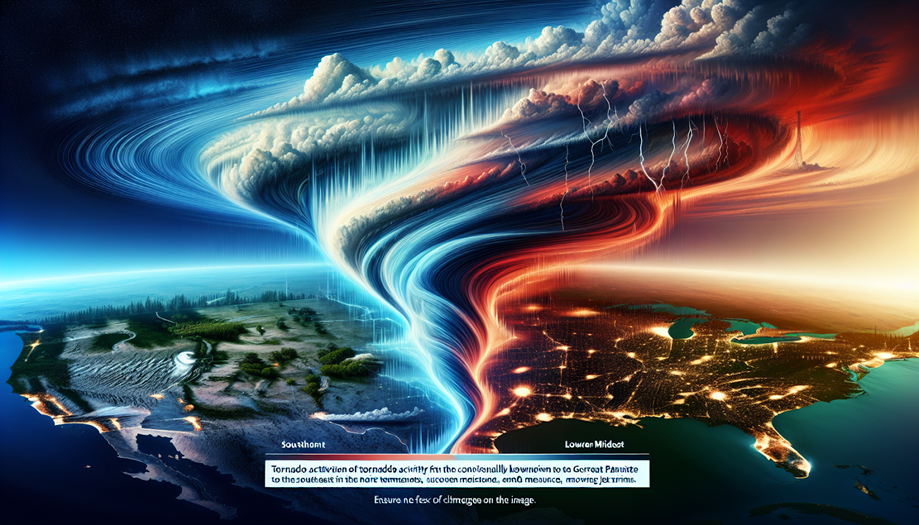For decades, when we thought about tornadoes in the U.S., our minds went straight to “Tornado Alley” — that broad, windy stretch across Texas, Oklahoma, and Kansas where nature regularly puts on an ominous show.
But lately, something’s changed. If you live in places like Kentucky, Tennessee, or Mississippi, you may have noticed the storms growing stronger, more frequent, and more deadly. You’re not imagining things.
Researchers are sounding the alarm: the heart of tornado activity in the U.S. is moving eastward. And yes, climate change may very well be behind the wheel.
Wait… tornadoes are moving?
Yes. Tracking decades of storm reports, scientists have noticed a clear geographic shift in where tornadoes are most likely to touch down. While the traditional Great Plains states (Texas, Oklahoma, Kansas) are seeing fewer tornadoes, places like the Southeast and parts of the Midwest — think Arkansas, Alabama, Illinois, Indiana — are seeing more.
Put simply:
- Tornado frequency is decreasing in the Plains
- It’s increasing in areas east of Interstate 35
This is a big deal. Not just because tornadoes are shifting, but because the impacts can be more devastating in eastern regions. Why?
These areas often have more trees and hills, making tornadoes harder to spot. Many homes aren’t built to the same wind-resistant standards as those in Tornado Alley. And nighttime tornadoes — more common in the Southeast — catch people off-guard while they’re sleeping.
So what’s driving this eastward shift?
Scientists believe climate change is playing a major role, though the exact connections are still being studied. Changes in the atmosphere are altering the ingredients needed to bake up these violent storms.
Some of the key factors:
- Warmer air temperatures, which increase fuel for storms
- More moisture in the air – especially in the Southeast, where humidity is rising
- Shifting jet streams – which can change storm routes and intensify systems
That combination creates a more volatile atmosphere east of the Plains — prime real estate for tornadoes.
Still skeptical? The data tells the story
In 2018, a groundbreaking study led by researchers at Northern Illinois University analyzed over four decades of tornado reports. The findings? A clear statistical pattern: the traditional hotbed of tornado activity is cooling off, and the Southeast is heating up.
Another study published in 2025 used machine learning to simulate future tornado-supportive environments. The models predicted a continued eastward shift, with the Ozark Plateau and lower Ohio Valley becoming key danger zones by mid-century.
But wait… is this just better reporting?
That’s a fair question. After all, people have phones, Doppler radar is more advanced, and reporting systems are more robust than they were in the 1970s. Could this uptick in eastern tornadoes just be a numbers illusion?
Experts say no. While improved data collection plays a small role, the shift in tornado-favorable environments is backed by atmospheric modeling — and physically observable changes in humidity, temperature, and storm patterns that have little to do with technology.
What this means for you
If you live east of the Rockies — especially in the lower Midwest or Southeast — now is the time to start treating tornado preparedness seriously, even if your area wasn’t high-risk 20 years ago.
That means:
- Knowing your severe weather alerts and shelters
- Having a plan for nighttime storms
- Taking warnings seriously — tornadoes can spin up fast and move unpredictably
Tornadoes aren’t just a Plains problem anymore
Climate change isn’t creating more tornadoes out of thin air — but it’s shifting where they form, thrive, and strike. That’s a subtle but powerful change. One that emphasizes something essential:
We can’t rely on yesterday’s weather maps to prepare for tomorrow’s storms.
So whether you live in Memphis or Milwaukee, it’s time to watch the skies… and update your emergency plans accordingly.




Your article helped me a lot, is there any more related content? Thanks!